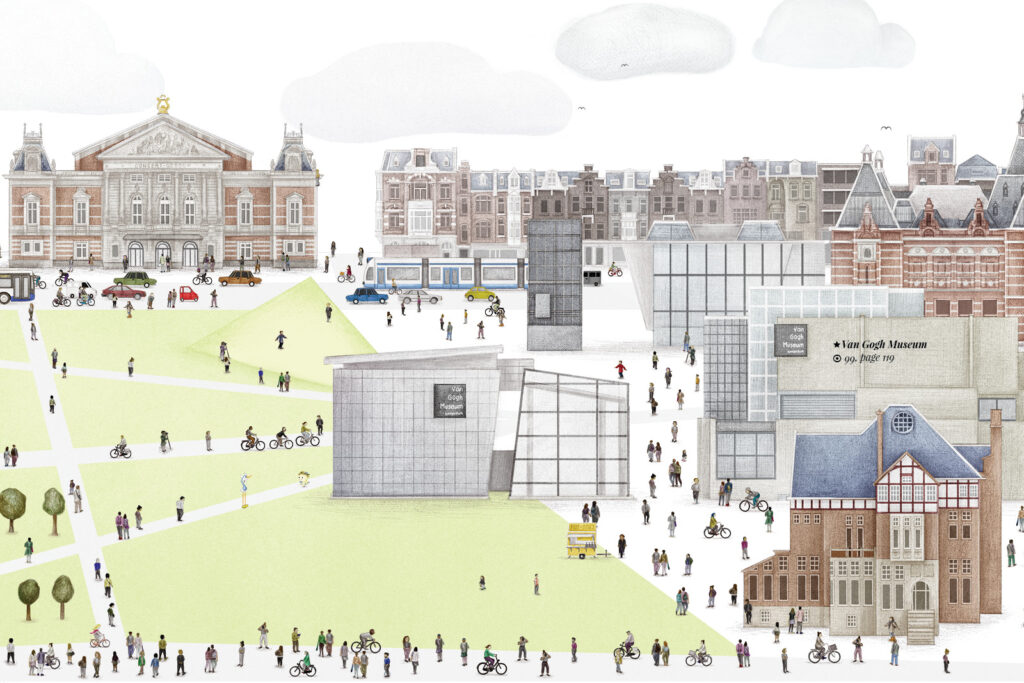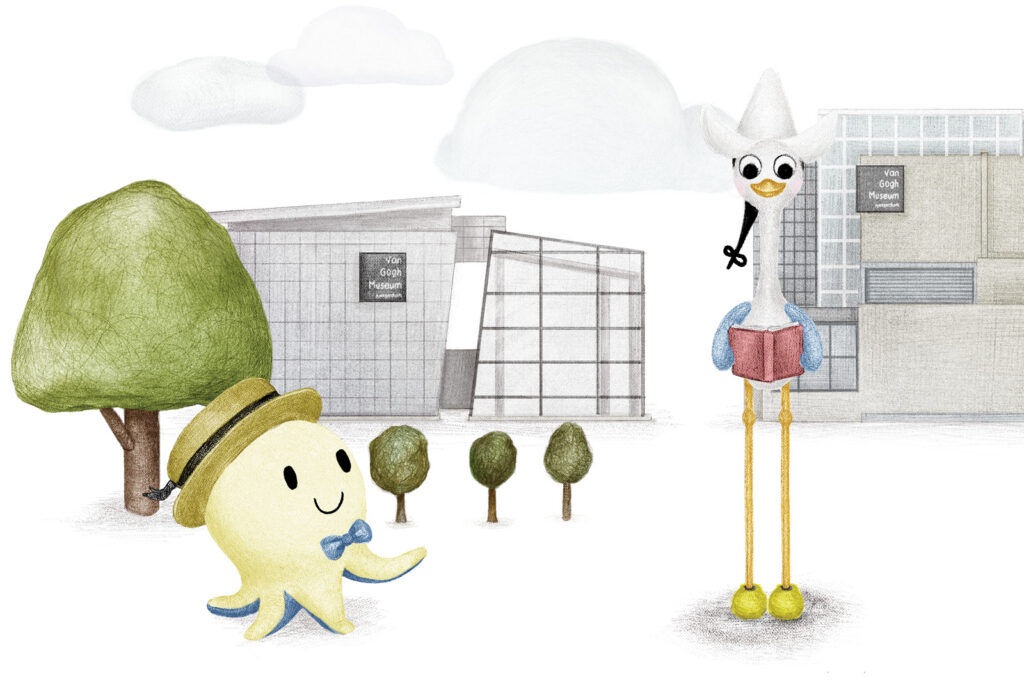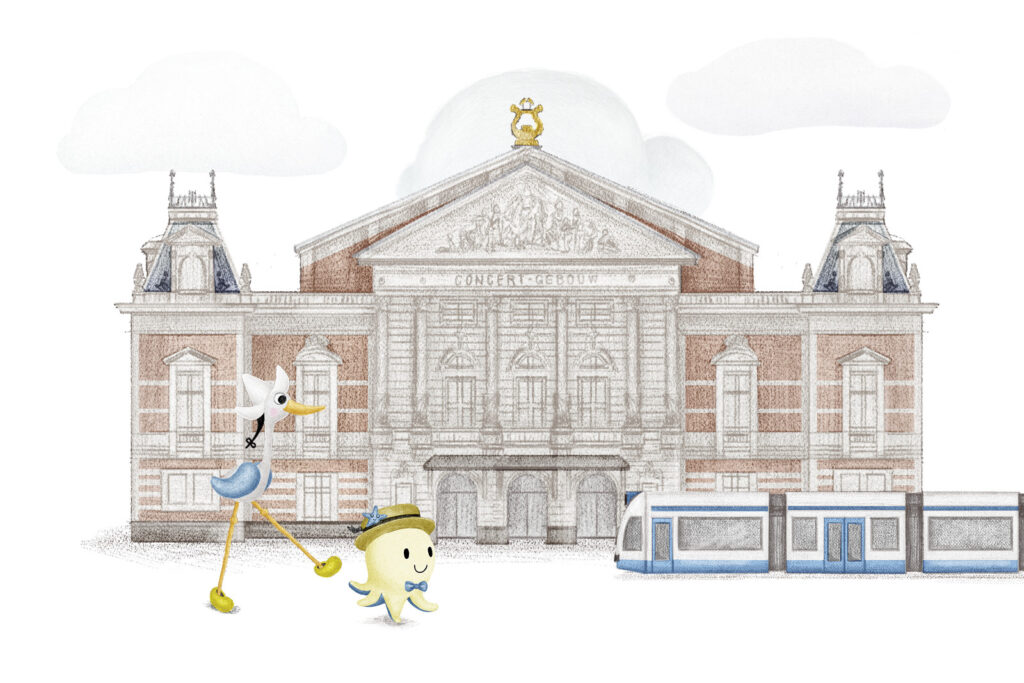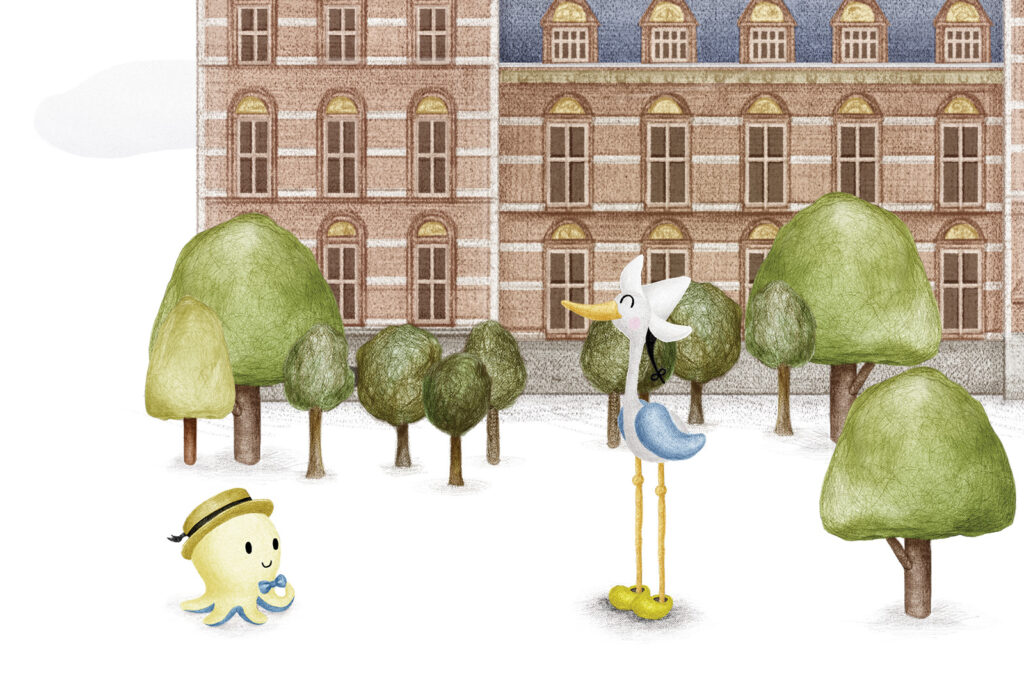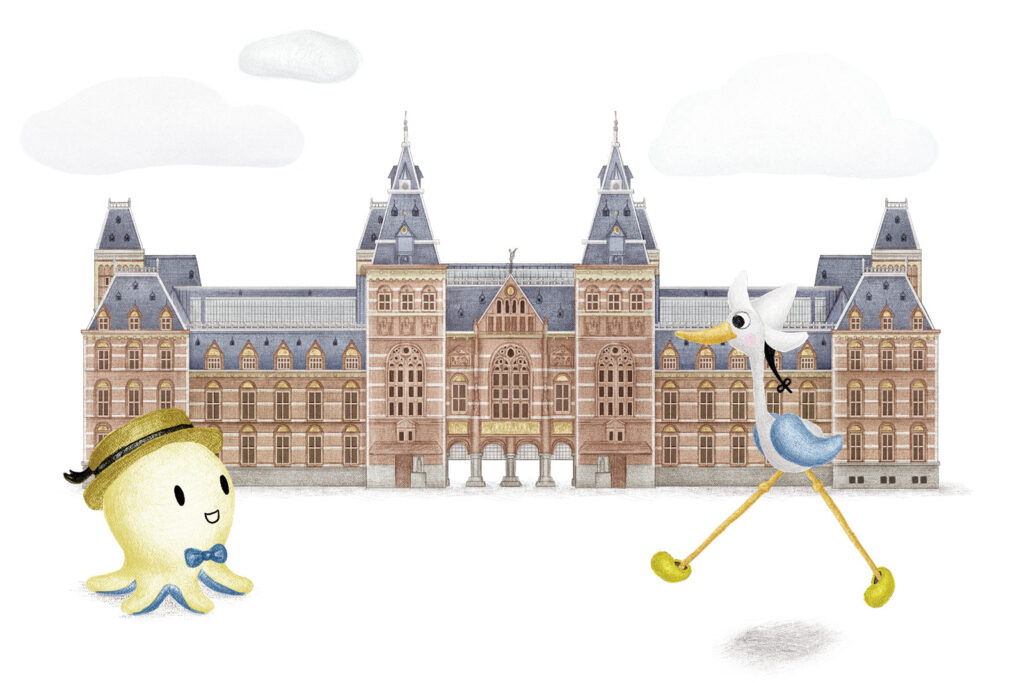Museum Square and Oud-Zuid (the Old South) are a magnificent centre of culture… and children’s activities.
The houses here are not as old as those on the Canal Ring and Oudezijds, but are equally beautiful. The original city centre was built in the 16th and 17th century but these other parts of town were not developed until the end of 19th century. Why wasn’t anything built in Amsterdam for 200 years? At the end of the Golden Age, Amsterdam lost its place as the world’s leading trading city. Many people left the city to make a living elsewhere. But around 1880, new machines were invented in Europe, which created new business opportunities and trade revived. In this so-called Silver Century, many people moved to Amsterdam to work in factories and in other new jobs. New houses were needed, so the city started growing again. Dutch people became proud again of their country and started collecting artworks and identifying new heroes. Rijksmuseum was built to bring all that ‘national’ art together and display it to the people, classical music would be performed in the new Concertgebouw (Concert Hall) to make others know that the Dutch had great taste. Stedelijk Museum, which was built a couple years later, was meant to showcase the most beautiful Dutch modern art. But Museumplein wasn’t the jewel it is now. Old photos show cows still grazing on the grass between the large new art buildings.

